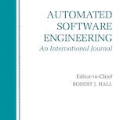In this paper, we investigate the effectiveness of state-of-the-art LLM, i.e., GPT-4, with three different prompting engineering techniques (i.e., basic prompting, in-context learning, and task-specific prompting) against 18 fine-tuned LLMs on three typical ASE tasks, i.e., code generation, code summarization, and code translation. Our quantitative analysis of these prompting strategies suggests that prompt engineering GPT-4 cannot necessarily and significantly outperform fine-tuning smaller/older LLMs in all three tasks. For comment generation, GPT-4 with the best prompting strategy (i.e., task-specific prompt) had outperformed the first-ranked fine-tuned model by 8.33% points on average in BLEU. However, for code generation, the first-ranked fine-tuned model outperforms GPT-4 with best prompting by 16.61% and 28.3% points, on average in BLEU. For code translation, GPT-4 and fine-tuned baselines tie as they outperform each other on different translation tasks. To explore the impact of different prompting strategies, we conducted a user study with 27 graduate students and 10 industry practitioners. From our qualitative analysis, we find that the GPT-4 with conversational prompts (i.e., when a human provides feedback and instructions back and forth with a model to achieve best results) showed drastic improvement compared to GPT-4 with automatic prompting strategies. Moreover, we observe that participants tend to request improvements, add more context, or give specific instructions as conversational prompts, which goes beyond typical and generic prompting strategies. Our study suggests that, at its current state, GPT-4 with conversational prompting has great potential for ASE tasks, but fully automated prompt engineering with no human in the loop requires more study and improvement.
翻译:暂无翻译




